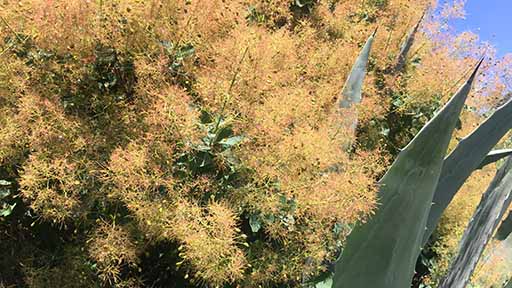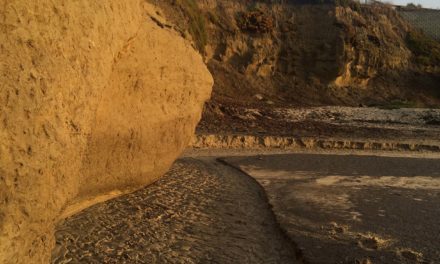Something to keep in mind… “If all of the ice on Greenland and Antarctica were to go, we are talking about 72, perhaps even 80 meters (262 ft) of global sea level rise.” Paul Beckwith
Melting glacier in China
The loud crack rang out from the fog above the Baishui No. 1 Glacier as a stone shard careened down the ice, flying past Chen Yanjun as he operated a GPS device.
…
Millions of people each year are drawn to Baishui’s frosty beauty on the southeastern edge of the Third Pole a region in Central Asia with the world’s third-largest store of ice after Antarctica and Greenland that’s roughly the size of Texas and New Mexico combined.
Third Pole glaciers are vital to billions of people from Vietnam to Afghanistan. Asia’s 10 largest rivers __ including the Yangtze, Yellow, Mekong, and Ganges __ are fed by seasonal melting.
…
The glacier has lost 60 per cent of its mass and shrunk 250 metres (820 feet) since 1982, according to a 2018 report in the Journal of Geophysical Research.”
CO2 IPCC Fourth Assessment Report, Working Group I
About 50% of a CO2 increase will be removed from the atmosphere within 30 years, and a further 30% will be removed within a few centuries. The remaining 20% may stay in the atmosphere for many thousands of years.
50% of that CO2 will remain in the atmosphere for 200 to many thousand years!
Even if all emissions could be stopped today a good part of the still existing CO2 would need to be sequestered to mitigate Climate Breakdown.
Carbon Sequestration
Carbon sequestration is the removal and storage of carbon from the atmosphere in carbon sinks such as plankton and aquatic plants, forests and soils through physical or biological processes, such as photosynthesis. Carbon sequestration can be enhanced by artificial processes. There are a number of pros and cons.
One-third or about 2 billion metric tons of carbon are stored in the ocean each year. This is causing acidification of the oceans which is impacting oysters, corals, some plankton species and other calcifying species.
The remaining atmospheric carbon must be removed if we are going to reduce the impact of Climate Breakdown. Work on this has started, but it remains to be seen if it will be too little too late…
‘Carbon farmers’ the newest recruits in state’s war on climate change
Daily Democrat October 1, 2018
more than 80 farmers [are] now engaged in a state-funded program aimed at increasing carbon concentrations in California’s soil. Part of the state’s overarching goal of curbing greenhouse gas emissions to mitigate climate change, the California Healthy Soils Initiative
A growing community of scientists now believe carbon farming will be essential in helping curb global warming trajectories.
Participating farmers add heavy layers of compost to invigorate plant growth while avoiding tilling, which exposes raw soil to the air and allows carbon atoms to bond with oxygen and float off as carbon dioxide
Marine microbes: Small but mighty at capturing carbon
Yale Climate Connection September 27, 2018
Averaging a life span of just a few days, 30 million marine microbes would fit in a shot glass, 100 in the width of a human hair. These organisms are tiny – just a single cell – but powerful when it comes to sequestering carbon dioxide.
Marine microbes comprise more than 98 percent of ocean biomass: microalgae, bacteria, archaea, protozoa fungi, and viruses. Together, marine microbes account for almost half of all photosynthesis on Earth: sunlight and carbon dioxide in – glucose and oxygen out.
Microbes are the engines that drive marine carbon cycling, regulating the climate as far as how much CO2 is sequestered in the planet’s oceans.
Marine microbes are an invisible yet powerful element in carbon cycling. The health of the oceans as a whole depends on these tiny engines of life. Understanding how marine microbes live and die allows us to take better care of the oceans and the whole earth system
This Swiss company has three sites… Swiss Company Opens Its Third CO2-Capturing Site
Yale Environment 360 October 2, 2018
Scientists have long argued that reducing greenhouse gas emissions isn’t enough by itself to combat climate change. The world must also lower existing atmospheric concentrations of CO2 by removing carbon dioxide from the air. ClimeWorks launched its first carbon sequestration plant in Zurich in May 2017. The facility captures 900 metric tons of CO2 annually, which is then pumped into the greenhouse of a Swiss farm.
Can forests save us from climate change?
Science Daily October 16, 2018
Additional climate benefits through sustainable forest management will be modest and local rather than global. Even if Europe’s forests are managed in such a way that their carbon sequestration is maximized it will not impact the climate significantly.
Biodiverse forests store double the carbon of monoculture forests
Science News October 5, 2018
To better understand the carbon cycle, researchers planted a variety of tree stands in China in 2009. The experimental forests included stands of a single tree species, as well as more diverse plots. The most diverse stands featured 16 species spread across an area of 7,000 square feet.
After almost a decade of maturation, scientists measured the carbon absorption and storage abilities of the different tree stands. The miniature forest with the most diverse mix of trees stored twice as much carbon as the least diverse, the stand with only a single species.
When forests take-up more carbon, it is a sign of greater productivity and health. A diversity of tree species provide food and shelter for a wider variety of animals
Report: Efforts to suck carbon from air must be ramped up
Apple News October 24, 2018
The nation needs to ramp up efforts to suck heat-trapping gases out of the air to fight climate change, a new U.S. report said.
The report Wednesday from the National Academy of Sciences says technology to do so has gotten better, and climate change is worsening. By mid-century, the world needs to be removing about 10 billion metric tons of carbon dioxide out of the air each year. That’s the equivalent of about twice the yearly emissions of the U.S.
Last year the world put nearly 37 billion metric tons of carbon dioxide into the air, and emissions have been rising.
…
Carbon Engineering acting chief scientist David Keith, a Harvard University professor, said removing carbon from the air makes sense only once humans have stopped putting so much in the air. “The idea that humanity might continue huge fossil (fuel) emissions while simultaneously balancing them with removal is nutty — you plug the leaks before bailing the boat.”
Climate Breakdown…
Four (4) reasons for using #climatebreakdown, not climate change:
1. It better conveys the extent of the problem
2. People don’t say “So what? The climate’s always breaking down”
3. It makes an implicit connection with the impact on our minds
4. It suggests that we can fix it.
HOT AIR NEWS ROUNDUP
Trump’s failure to fight climate change is a crime against humanity
CNN October 18, 2018
[Politicians] who oppose action to address human-induced climate change should be held accountable for climate crimes against humanity. They are the authors and agents of systematic policies that deny basic human rights to their own citizens and people around the world, including the rights to life, health, and property. These politicians have blood on their hands, and the death toll continues to rise.
Politicians say nothing, but US farmers are increasingly terrified by it – climate change
The Guardian October 19, 2018
Research forecasts Iowa corn yields could drop in half within the next half-century thanks to extreme weather – yet it’s not part of the political conversation
…
This year, crops in north-west Iowa are looking spotty. Up into Minnesota they were battered by spring storms and late planting, and then inundated again in late summer.
…
Down in Kansas, they are resigned to the fact that the water will be gone sooner rather than later. The high plains are locked in drought.
…
Farmers are taking action on their own, after losing money six straight years in Iowa and wondering where the corn ethanol bubble of 2008 went. They are starting to look into cover crops like rye to protect the soil and hold nutrients in place during these increasingly harsh flushes.
…
Politicians are still talking bioswales and mini-marshes when we all need to be thinking, at least, about retiring a third of the land in the upper midwest from corn and soy rotations. That isn’t something that the ag supply chain – controlled by the Koch brothers, Bayer-Monsanto and Dow-Dupont – can readily accept, because to give up acres is to give up revenue. And they happen to control the political infrastructure in the Corn Belt. But at some point the construct fails. In western Kansas, they’re having a tough time growing corn even with irrigation and chemicals. It is getting so warm that the plant simply cannot service itself.
Are You Kidding Me?’ Outrage as Democrats Push ‘Incremental Steps’ Over Bold Agenda Needed to Save Planet from Climate Catastrophe
Common Dreams October 18, 2018
“Democrats are unlikely to pursue major climate change legislation if they win the House majority, despite a growing body of evidence suggesting time is running out to address the issue,” The Hill reported on Wednesday, citing House members who believe a piecemeal approach to climate policy will be more “pragmatic” in the face of GOP and White House denialism.
So, republicans are no longer denying that Climate Breakdown exists?
Sort of…
They are now saying that it exists but that it is not man made. Hence, they want to invest millions with their corporate friends to build protective infrastructure…
Why conservatives keep gaslighting the nation about climate change
VOX October 23, 2018
In recent years, leaders of the Republican Party have become aware that denying the existence of global warming makes them look like idiots. Changes in climate have become obvious, not just to scientists, but to ordinary people — they can be directly measured, with such exotic instruments as a “thermometer.”
…
We don’t really know how much humans are contributing to climate change, so there’s no sense in trying hard to reduce our emissions.
But we do know sea levels are rising — “that’s measurable” — so we know we need to build up Fortress America to withstand the changes.
…
Denying human responsibility for climate change is climate change denial.
Yes, ExxonMobil and Chevron Are Still Distorting Climate Science
EcoWatch October 24, 2018
If you look at headlines from the last year, ExxonMobil, Chevron and other major fossil fuel companies have seemingly turned a new page on climate change. Recently, ExxonMobil received major kudos for giving $1 million to Americans for Carbon Dividends, a lobbying offshoot of the industry-backed Climate Leadership Council. Shortly before that, ExxonMobil, Chevron and Occidental Petroleum got good press for each pledging $100 million to the Oil and Gas Climate Initiative, which amounts to less than one percent of their capital and exploration budget for 2018 (ExxonMobil’s is $28 billion while Chevron’s is $15.8 billion). Companies have also touted their support for the Paris climate agreement as well as their research and investments in renewables.
But, as I and my colleagues have analyzed, this “support” is a PR distraction when these companies are keeping up business-as-usual.
Climate Deniers on the Ballot in 2018
Desmog October 23, 2018
As the midterm elections approach, DeSmog is taking this opportunity to highlight some of the top climate science deniers currently running for office in the U.S.
Did we miss someone notable? Let us know.
The Environment Is on the November Ballot — Here’s Where and What’s at Stake
Desmog October 23, 2018
Environmental issues such as polluted drinking water in Michigan and harmful algal blooms in Florida could influence which candidates voters will support in this November’s midterm election, says Holly Burke, communications coordinator of the League of Conservation Voters.
In North Carolina, hurricanes did what scientists could not: Convince Republicans that climate change is real
Washington Post October 18, 2018
The impact, say residents of this conservative congressional district, lies right before their eyes, prompting conversations among farmers, fishermen and others on how climate change has hurt the local economy and environment.
…
Separately, fishermen have noticed in recent years that black sea bass are migrating north because of warming ocean temperatures. Other watermen say they’re finding more saltwater fish such as flounder upriver as the sea level rises.
“I’m not a scientist. I just know what I see,” said Carl Marshburn, a Republican who has operated tour boats along the Cape Fear River for three decades. He said he’s had to start coating the bottom of his river boats with antifouling paint to prevent barnacles and other marine organisms from growing amid saltwater intrusion.
Redrawing the Map: How the World’s Climate Zones Are Shifting
Yale Environment October 24, 2018
Here we summarize some of the littler-known features that have shifted in the face of climate change and pulled the map out from under the people living on the edges. Everything about global warming is changing how people grow their food, access their drinking water, and live in places that are increasingly being flooded, dried out, or blasted with heat waves. Seeing these changes literally drawn on a map helps to hammer these impacts home.
El Nino could bring drought relief to southwestern US
PHYS ORG October 24, 2018
Climatologists say conditions are right for development of an El Nino weather pattern that could bring wetter than normal conditions this winter in drought-stricken area of the southwestern U.S.
But weather researchers said Wednesday that even if an El Nino occurs, that doesn’t assure that parched areas of the Southwest will receive more rain and snow. They also say higher-than-average precipitation is not likely to make up for rainfall deficits in the region over the past year.
Changing climate forces desperate Guatemalans to migrate
National Geographic October 23, 2018
Guatemala is consistently listed among the world’s 10 most vulnerable nations to the effects of climate change. Increasingly erratic climate patterns have produced year after year of failed harvests and dwindling work opportunities across the country, forcing more and more people like Méndez López to consider migration
…
During the past decade, an average of 24 million people each year were displaced by weather events around the world, and although it’s unclear how many of those displacements can be attributed to human-caused climate change, experts expect this number to continue to rise.
…
In previous years, families affected by a bad year’s harvest would seek work as day laborers on commercial farms, making enough to purchase staples like corn and beans. But this year, there’s no work to be found. Even well-established commercial agriculture ventures have been affected by this year’s drought, foreshadowing the bigger problems that will arise as the climate-sensitive crops that make up the bulk of Guatemala’s key agricultural exports (and domestic job market) suffer the effects of rising temperatures
…
In Guatemala City, two to three planes touch down at the Guatemalan Air Force Base every day, each one carrying around 150 Guatemalan citizens who have been deported or intercepted as they attempted to cross into the United States. Many were fleeing hunger and extreme poverty in their home country.
Cambodia’s high-rises, slavery and climate change
Aljazeera October 15, 2018
Desperate to support their families financially and left with no other option – Cambodia lacks a social security system and farmers, which make up half of the population, receive no support from the government – many are forced to migrate to brick factories hoping to make ends meet.
“Our research aims to show that climate migration is happening in the here and now and that the impacts of climate change are social as well as natural”
…
But when she arrived at her new workplace she quickly learned her wages were insufficient to cover daily expenses and became caught up in a spiral of debt. “Working at the factory, I didn’t have enough money to support my family, so I got a loan from the old factory owner … but then it’s still not enough so I had to borrow more money from the microfinance for the family again,” she says.
…
“Brick factory workers … most of the time are treated like animals. They are sold from one factory to another factory. Their debt keeps increasing and [they] are subjected to harassment and violence,”
Electric cars are set for explosive growth, but it’s not all smooth runway ahead
Independent October 20, 2018
It varies a bit from country to country but the average age of a car in the UK before it is scrapped is 14 years. So even if most of the world’s car production had switched to electric in another decade, which is almost unthinkably ambitious, it would still be more than 25 years before the majority of cars on the road were electric. Just building the infrastructure to fuel the world’s fleet is a huge challenge. And whereas many uses of electricity are becoming much more efficient – lighting, air conditioning for example – the need for energy in transport is determined by the basic laws of physics. Improvements in efficiency will happen, but there are limits as to what can be achieved.
Saudi Arabia signs business deals worth $50 billion at ‘Davos in the desert’
CNN October 23, 2018
State oil company Aramco announced Tuesday that it had signed 15 memorandums of understanding worth $34 billion with firms from eight countries, including the United States, at the Future Investment Initiative.
…
Among the companies partnering with Aramco are US oil field service firms Halliburton (HAL), Schlumberger (SLB) and Baker Hughes (BHGE). US conglomerate Air Products (APD) will work on a gas power project.
France’s Total (TOT) has agreed to begin engineering studies on building a petrochemical complex, as well as partner with Saudi Aramco on a retail gas station network. Hyundai Heavy Industries, from South Korea, will develop a maritime facility.
Climate Adaption
Excellent graphics illustrating contributions and carbon-storage capabilities of farming…
Infographic: Why Farmers Are Ideally Positioned to Fight Climate Change
Inside Climate News October 24, 2018
Scientists say that without significant changes, farming’s global warming footprint will grow rapidly in the next few decades. Farmers, along with the rest of us, would pay the price. But climate-friendly farming could help solve the problem by trapping carbon in the soil, improving its quality while offsetting dangerous emissions.
Asian Development Bank signals end to ‘dirty’ coal finance
Climate Change News October 24, 20018
The Asian Development Bank (ADB) is making a decisive shift to clean energy, according to its energy chief.
Coal plants are becoming unviable investments…
“Clean energy will power Asia’s future,” wrote the bank executive. “We will ensure that, as we meet our own climate finance targets, ADB’s lending portfolio has no place for ‘dirty energy’.”
In the “transition” to clean energy, the bank continues to support gas-fired power plants, which emit roughly half the CO2 of coal plan.
Whitehaven Coal: activist shareholders to force vote on climate strategy
The Guardian October 25, 2018
Activist shareholders in Australia’s largest independent coalminer are expected to vote in record numbers on Thursday to demand Whitehaven Coal aligns its long-term company strategy with the Paris climate agreement.
…
Any substantial level of support would be significant, considering Whitehaven is a pure-play coalminer.
The company released a statement to the ASX on 5 October that indicated it would consider climate risk reporting in 2019, a move interpreted as a concession to activist shareholders.
In ‘Historic Moment’ for Climate Action, Wales Pledges to Leave Its Remaining Coal in the Ground
Common Dreams October 22, 2018
Wales’ new proposed plan to reject all future coal mining applications is set to be finalized by the end of the year, a … new energy strategy which will aim to ensure that 70 percent of Wales’ energy is derived from renewable sources by 2030.
Wildlife & the Environment
Food production affected by Climate Breakdown…
Hurricane Michael may have dealt a deadly blow to Florida’s nascent oyster farms
NBC October 22, 2018
Are we going to dump some more money back out here and keep moving forward or just call it quits, go back to welding?” asked one oyster farmer.
UNH study: More than two-thirds of baby moose are killed by winter ticks
Concord Monitor October 23, 2018
An updated study by researchers at the University of New Hampshire has found that winter ticks, the parasite that has been killing moose throughout Northern New England for years, are the primary cause of an unprecedented 70 percent death rate of calves over a three-year period.
Species in danger as humans hack at tree of life
Climate News Network October 17, 2018
Humankind is now extinguishing animal and plant species so swiftly that evolution cannot keep up, according to new research.
Unless nations follow up their promises to preserve habitat and conserve biodiversity, so many mammals will disappear in the next 50 years that it will take nature between three and five million years to recover.
Climate change-driven range losses among bumblebee species are poised to accelerate
Nature October 18, 2018
Climate change has shaped bee distributions over the past century. Here, we conducted the first species-specific assessment of future climate change impacts on North American bumblebee distributions, using the most recent global change scenarios developed in the Fifth Assessment Report of the Intergovernmental Panel on Climate Change (IPCC).
Recent Climate Change Studies
Very long article with an excellent animation…
Arctic ice sets speed limit for major ocean current
MIT October 17, 2018
Long-term melting may lead to release of huge volumes of cold, fresh water into the North Atlantic, impacting global climate.
…
The Beaufort Gyre is an enormous, 600-mile-wide pool of swirling cold, fresh water in the Arctic Ocean, just north of Alaska and Canada. In the winter, this current is covered by a thick cap of ice. Each summer, as the ice melts away, the exposed gyre gathers up sea ice and river runoff, and draws it down to create a huge reservoir of frigid fresh water, equal to the volume of all the Great Lakes combined.
Scientists at MIT have now identified a key mechanism, which they call the “ice-ocean governor,” that controls how fast the Beaufort Gyre spins and how much fresh water it stores.
Climate-driven declines in arthropod abundance restructure a rainforest food web
PNAS October 15, 2018 h/t smiley
Arthropods, invertebrates including insects that have external skeletons, are declining at an alarming rate.
…
Consequently, even small increments in temperature can precipitate sharp decreases in fitness and abundance. These predictions have been verified in a variety of tropical reptiles, amphibians, and invertebrates
…
Here we analyze long-term data on climate change, arthropod abundance, and insectivores within the Luquillo rainforest in northeastern Puerto Rico, with the aim of determining if increases in ambient temperature may have driven reductions in arthropod numbers
…
We suggest that climate warming has emerged as such a dominant force affecting arthropod populations in the Luquillo forest and, most likely, in other tropical forests experiencing significant increases in ambient temperature.
This is another collection of articles from Nature…
Collection: Targeting 1.5 Degrees
Nature October 4, 2018
This collection draws together content from Nature Climate Change, Nature Geoscience, Nature Communications, Nature Energy and Nature on the possibility of limiting climate warming to 1.5 degrees above pre-industrial levels.
Study finds availability of nitrogen to plants is declining as climate warms
PHYS ORG October 22, 2018
Researchers have found that global changes, including warming temperatures and increased levels of carbon dioxide in the atmosphere, are causing a decrease in the availability of a key nutrient for terrestrial plants. This could affect the ability of forests to absorb carbon dioxide from the atmosphere and reduce the amount of nutrients available for the creatures that eat them. … Nitrogen is essential for the growth and development of plants. On the forest floor, microbes break down organic matter such as down fallen leaves and release nitrogen to the soil. The tree retrieves that nitrogen to build proteins and grow. However, as trees have access to more carbon, more and more microbes are becoming nitrogen limited and releasing less nutrients to the trees.
Global Warnings
QMS: Time to disconnect greed from the welfare of earth, if survival means anything. I like trees.
Paul Beckwith: “I declare a global climate change emergency to claw back up the rock face to attempt to regain system stability, or face an untenable calamity of biblical proportions.”
Kevin Hester: “There is no past analogue for the rapidity of what we are baring witness to. There has been a flood of articles … 2C is no longer attainable and that we are heading for dangerous climate change”
Guy McPherson: “The recent and near-future rises in temperature are occurring and will occur at least an order of magnitude faster than the worst of all prior Mass Extinctions. Habitat for human animals is disappearing throughout the world, and abrupt climate change has barely begun.”
Magi Amma: “We need to turn on a dime at mach nine!”





